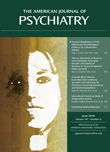International Consensus Study of Antipsychotic Dosing
Abstract
Objective
Potency equivalents for antipsychotic drugs are required to guide clinical dosing and for designing and interpreting research studies. Available dosing guidelines are limited by the methods and data from which they were generated.
Method
With a two-step Delphi method, the authors surveyed a diverse group of international clinical and research experts, seeking consensus regarding antipsychotic dosing. The authors determined median clinical dosing equivalents and recommended starting, target range, and maximum doses for 61 drugs, adjusted for selected clinical circumstances.
Results
Participants (N=43) from 18 countries provided dosing recommendations regarding treatment of psychotic disorders for 37 oral agents and 14 short-acting and 10 long-acting parenteral agents. With olanzapine 20 mg/day as reference, estimated clinical equivalency ratios of oral agents ranged from 0.025 for sulpiride to 10.0 for trifluperidol. Seventeen patient and treatment characteristics, including age, hepatic and renal function, illness stage and severity, sex, and diagnosis, were associated with dosing modifications.
Conclusions
In the absence of adequate prospective, randomized drug-drug comparisons, the present findings provide broad, international, expert consensus-based recommendations for most clinically employed antipsychotic drugs. They can support clinical practice, trial design, and interpretation of comparative antipsychotic trials.



